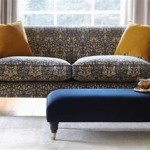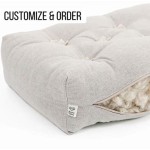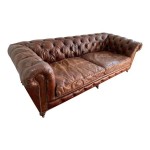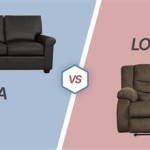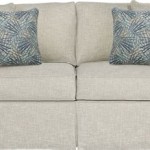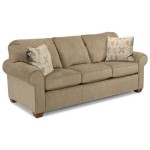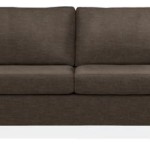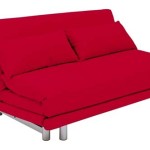Types of Sofa Springs
Sofa springs are a crucial component determining a sofa's comfort, support, and longevity. Understanding the different types of springs available can significantly aid consumers in making informed decisions when purchasing a new sofa. This article will explore the various types of sofa springs, outlining their construction, benefits, and drawbacks to help guide potential buyers.
Coil Springs
Coil springs are the most traditional and widely used type of sofa spring. They are made of metal, typically steel, formed into helical coils. These coils are then interconnected to form a supportive structure. Coil springs offer excellent durability and support, and their interconnected nature allows them to distribute weight evenly. Several variations exist within the coil spring category.
Pocket Springs: These are individually encased coils that operate independently. This independent action allows for superior contouring to the body, minimized motion transfer, and targeted support. Pocket springs are often found in higher-end sofas and are known for their exceptional comfort and longevity.
Bonnell Springs/Open Coil: This is the most basic and cost-effective type of coil spring. Bonnell springs are hourglass-shaped and connected by helical wires. They offer a firm, bouncy feel and are generally durable, although they may not provide the same level of contouring or motion isolation as pocket springs.
Offset Springs: Offset springs are a variation of the Bonnell spring, utilizing a flattened section in the coil design. This flattened section allows the springs to connect more closely, which can provide a smoother, more consistent sitting surface and reduced noise compared to traditional Bonnell springs. They offer a good balance between cost and comfort.
Sinuous Springs/Zig-Zag Springs
Sinuous springs, also known as zig-zag springs, are made of continuous S-shaped wires that span the width of the sofa frame. These wires are attached to the frame at several points and offer a firm, supportive base. Sinuous springs are generally less expensive to manufacture than coil springs, making them a common choice for budget-friendly sofas.
One advantage of sinuous springs is their space-saving design, which allows for thinner sofa profiles and more storage space beneath the seat cushions. They are also lightweight and relatively easy to install. However, they may not offer the same level of durability or individualized support as coil springs, particularly over extended use.
The gauge and thickness of the wire used in sinuous springs significantly impact their longevity and support. Thicker gauge wires generally provide greater durability and a firmer feel.
Eight-Way Hand-Tied Springs
Eight-way hand-tied springs represent the pinnacle of sofa spring construction. They are crafted by skilled artisans who individually tie each spring to the frame and to neighboring springs using twine. This intricate process creates a highly supportive and responsive seating surface that conforms precisely to the body. Eight-way hand-tied springs offer exceptional comfort, durability, and longevity.
Each spring in an eight-way hand-tied system is individually adjustable, allowing for customized support and a truly tailored seating experience. This handcrafted construction also contributes to the overall quality and value of the sofa. However, eight-way hand-tied springs are the most expensive option and are typically found only in high-end, luxury sofas.
Drop-In Coil Units
Drop-in coil units are pre-assembled units consisting of coils encased in a flexible frame. These units are designed to be easily inserted into the sofa frame, simplifying the manufacturing process. Drop-in coil units offer a balance of cost-effectiveness and comfort, providing a supportive yet affordable seating solution.
While drop-in coil units may not provide the same level of individualized support as pocket springs or eight-way hand-tied springs, they offer a considerable improvement over basic sinuous springs. The quality of a drop-in unit can vary depending on the type of coils used and the construction of the surrounding frame.
Webbing
While not technically a spring system, webbing is often used in conjunction with or as an alternative to springs, particularly in more contemporary sofa designs. Webbing consists of interwoven strips of fabric, typically jute, stretched across the sofa frame. It provides a supportive base for the cushions and contributes to the overall comfort and resilience of the sofa.
Webbing offers a lightweight and cost-effective alternative to traditional spring systems, particularly for sofas with a minimalist aesthetic. The tightness and quality of the webbing significantly influence the level of support it provides. While durable, webbing may not offer the same level of longevity or resilience as a well-constructed spring system.

Diffe Types Of Sofa Springs

Sofa Suspension Types Which Is Better

Various Types Of Sofa Springs Furniturestop Co

Sinuous Springs Vs Eight Way Hand Tied The Stated Home Blog

Sofa Advice From The People Who Design And Make Them Wirecutter

Inside Your Sofa What You Need To Know About Couch Springs More
What Types Of Springs Are Used In Furniture Fair

Sofa Advice From The People Who Design And Make Them Wirecutter

Springs The Sofa Chair Company

What S In My Sofa
Related Posts

